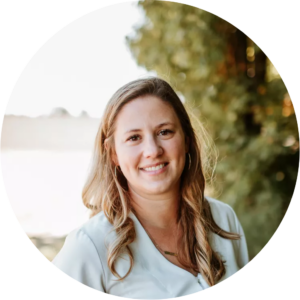Embracing technology, advancing education, and obtaining professional certifications are all key to moving the future of sleep medicine forward for sleep technologists.
As sleep industry regulations, patient preferences, and payment parameters have shifted from incentivizing in-lab sleep testing to at-home testing, the occupational operations of sleep technologists have continued to evolve as well.
Laree Fordyce, MS, CCSH, RPSGT, RST, FAAST, AAST President, explains that the pressures of the pandemic forced dramatic changes in how both patients and sleep industry professionals view sleep apnea testing. “The pandemic largely caused a shift in the job market …,” she notes.
Amber Allen, BA, AAS, RPSGT, RST, CCSH, Director of Polysomnographic Technology at Collin College and BRPT President-Elect, adds that while several factors have impacted the sleep tech job market, the pandemic was an “eye-opening experience” that led to many sleep medicine facilities evaluating and changing their operations and processes. “There is also a technology impact as we see new innovations in diagnostic evaluation, treatments, and the way sleep data can be analyzed,” Allen says.
The shifts, along with the reality that retiring sleep tech professionals aren’t being replaced at the rate they are leaving the industry, mean that the opportunity for sleep technologists is tremendous right now. To continue with a competitive edge in an ever-shifting landscape, here are seven ways that sleep technologists can lock in their future in the industry.
1. Focus on Patient Education
As the American Association of Sleep Technologists (AAST) workforce study noted, while at-home apnea testing is more convenient and even straightforward from a technological standpoint, it also requires significantly more pre- and post-testing patient education from sleep technologists. In order to successfully educate patients, sleep technologists must take an active role in furthering their own education about at-home sleep technology and solutions that speed up diagnostic testing and improve patient adherence.
“I think a key for sleep techs as they prepare for the future is furthering their education,” Allen comments. “Innovations will continue to happen within the profession, as we have seen over the years. Technologists need to keep up to date on the latest innovations and happenings in the field and educate themselves to best position themselves for opportunities for advancement and adaptation within this ever-changing profession.”
Of course, expanding education is not an isolated step and will take collaboration from sleep physicians and industry leaders to ensure a focus on equipping sleep technologists with the tools they need to educate and empower patients.
From a personal perspective, sleep technologists may consider looking for ways to further their knowledge of sleep technology through educational resources, conferences, and device manufacturers. Patient conversations and gathering feedback can also go a long way toward understanding and directing patient education needs. After all, who better to understand trends in patient preferences than the techs working directly with them?
2. Seek Professional Credentials
Along with advanced education, obtaining professional credentials such as a Registered Polysomnographic Technologist (RPSGT) certification, a Pediatric Certificate from the Board of Registered Polysomnographic Technologists (BRPT), and the Certification in Clinical Sleep Health (CCSH) are all valuable tools to prepare for the future of the profession.
“As I tell my students, the more credentials you have, the more marketable you become,” says Allen. She recommends the CCSH credential for several different reasons: first because it demonstrates an advanced knowledge base in the sleep technologist; and second, because the credentials provide further opportunities for growth.
Allen adds that CCSH credentials can also be utilized in many different ways, even beyond the direct sleep field.
“There is a myriad of healthcare specialties that work with patients who are at high-risk for sleep disorders and the CCSH allows the technologist to be this bridge to help identify patients who need their sleep evaluated but may have not thought or known to come to a sleep center,” she points out.
“There are so many roles that this credential opens doors to, from sleep navigators to sleep educators to sleep coaching,” Allen continues. “I believe we will continue to see these roles grow.”
3. Understand the Shift in Patient Populations
In expanding their education and earning more professional credentials, most sleep technologists will also be exposed to how shifting patient populations will guide their care. Allen recommends that sleep technologists embrace the fact that patient populations have changed and will only continue to do so.
“The patients that are coming to the labs are sicker patients, and most sleep patients, in general, have lifelong conditions that will require continuous follow-up throughout their lifetimes,” she explains. For instance, the AAST noted that diagnostic technology in sleep studies will most likely expand to providing risk predictions and even treatment options for neurodevelopmental, cardiac, and neurodegenerative diseases.
Current and chronic conditions will impact how patients’ sleep conditions present and how testing is performed and interpreted, as well as guide treatment plans. And as the professionals carrying out the testing and relaying diagnostic findings, sleep techs’ understanding of how those conditions affect the full scope of sleep medicine is crucial.
“In order to provide the best care for their patients, sleep technologists need to have an in-depth knowledge of physiology, the patient impact of what is discovered in the sleep studies they view, and how the various diagnostic procedures and treatments work,” Allen points out.
4. Get in Touch with Technology
Sleep technology, including software platforms, are not the way of the future; they are the way of now. Sleep technologists have already been at the forefront of its implementation, but further embracing, learning, and applying practical steps gleaned from technology in all steps from diagnostics to data aggregation solutions to care management will be key. For instance, technology such as Somnoware’s Care Management allows for platform-to-device connection, providing a longitudinal view of patient testing, data, and updates to allow for new interventions and patient engagement as needed. And as Fordyce notes, embracing new technology is important, as is understanding that it is meant to assist, not replace, sleep professionals. Specifically, Fordyce encourages sleep techs to embrace technology such as auto scoring, remote titrations, HSAT, AI, remote CPAP care, and telemedicine.
“Technology has boomed in this profession, and these new technologies can help sleep techs have a greater impact on their patients,” Allen says, adding that technology can free up time from scoring to allow technologists to do more education and screenings.
Allen also encourages sleep technologists to learn the ins and outs of sleep technology so they can better understand it from both a professional and patient perspective. “Patients have access more than ever now to technology that ‘evaluates’ their sleep in some capacity, and a lot of patients are using the results of these devices to make decisions regarding their sleep,” she points out. From smartwatches to apps that promise better sleep, consumers may come into sleep testing with a baseline expectation of technology that a savvy sleep technologist can use to expound and educate upon.
For instance, sleep medicine technology paired with device apps help patients become more vested in their treatments and help track patient compliance. And according to Allen, a more vested patient is usually a more compliant patient, so it helps the techs to have better dialogue with their patients.
“Technology like Somnoware gives patient overviews at a glance, helps track compliance, and track changing trends with the patient,” she says. “This allows technologists to help track patients for the physicians and free up the physicians more for new patients.”
5. Embrace Alternative Therapies
Along with embracing new and evolving technologies, Allen encourages sleep technologists to learn as much as they can about alternative therapies and their applications in sleep medicine.
For instance, oral appliances, positional therapies, hypoglossal nerve stimulation, and surgical alternatives are some of the alternative therapies available for obstructive sleep apnea, while phrenic nerve stimulation is an option for some patients with central sleep apnea.
“Familiarity with how these treatments work and the way these treatments impact the physiological mechanisms of these sleep-related breathing disorders will be beneficial to sleep technologists,” she notes.
6. Collaborate with Sleep Physicians
As a direct link to the patient and heavily involved in patient care and follow-up, sleep technologists are uniquely primed to evolve into health educator roles. And that’s a role that Allen believes sleep technologists—and physicians—should embrace together.
“I think as the sleep physicians start realizing how they can utilize sleep health educator roles within their practices, we will see more sleep technologists in these roles to identify at-risk patients who need to be formally evaluated, facilitate patient compliance with treatments, and ensure timely follow-ups with patients to make sure their treatments stay in line with physiological changes in the aging process,” she says.
Allen also adds that sleep technologists can play a vital role in understanding how the technology they are utilizing can be employed on a broader scale. “Knowing how these technologies can be integrated into what they do within the sleep center will help techs be better utilized in their facilities,” she points out. “I encourage technologists to learn as much as they can about the latest technologies, to be forward-thinking, as it is better to be prepared for the future rather than scrambling to learn this information when these technologies become more mainstream.”
7. Get Involved
Allen is straightforward in her advice on this one: “Become involved with sleep organizations.”
She points out that there are many opportunities to volunteer with organizations such as the BRPT, AAST, and AASM. Getting involved in different aspects of the sleep industry can not only influence sleep techs’ current career path but change the trajectory of the future as well.
In addition to volunteering with official organizations, the AAST also encourages sleep techs to consider mentoring others in the field. Not only will mentoring help current sleep techs expand their own knowledge base, but it also fosters future leaders and innovators in the field—a necessary step to lock in the future for everyone.
“Don’t be afraid of change,” suggests Allen. “Learn about the change and prepare yourself for it. The more you learn and are willing to adapt, the more opportunities become available.”
With the field of sleep medicine evolving and more opportunities than ever for sleep technologists to be an integral part of leading the industry forward, you can start establishing yourself with innovative solutions like Somnoware. Somnoware’s platform helps you more efficiently diagnose and manage patients. Learn how Somnoware can help you…
• Save time by streamlining sleep & respiratory testing workflows
• Improve therapy adherence by automating patient engagement
• Boost DME order efficiency by digitally connecting stakeholders
Want to learn more? Schedule a brief demo at somnoware.com.
 Chaunie Brusie is a mom of five, a native Michigander, and a Registered Nurse turned writer and editor. She specializes in health and medical writing. Her work has appeared everywhere from The New York Times to Glamour to Parents magazine.
Chaunie Brusie is a mom of five, a native Michigander, and a Registered Nurse turned writer and editor. She specializes in health and medical writing. Her work has appeared everywhere from The New York Times to Glamour to Parents magazine.

